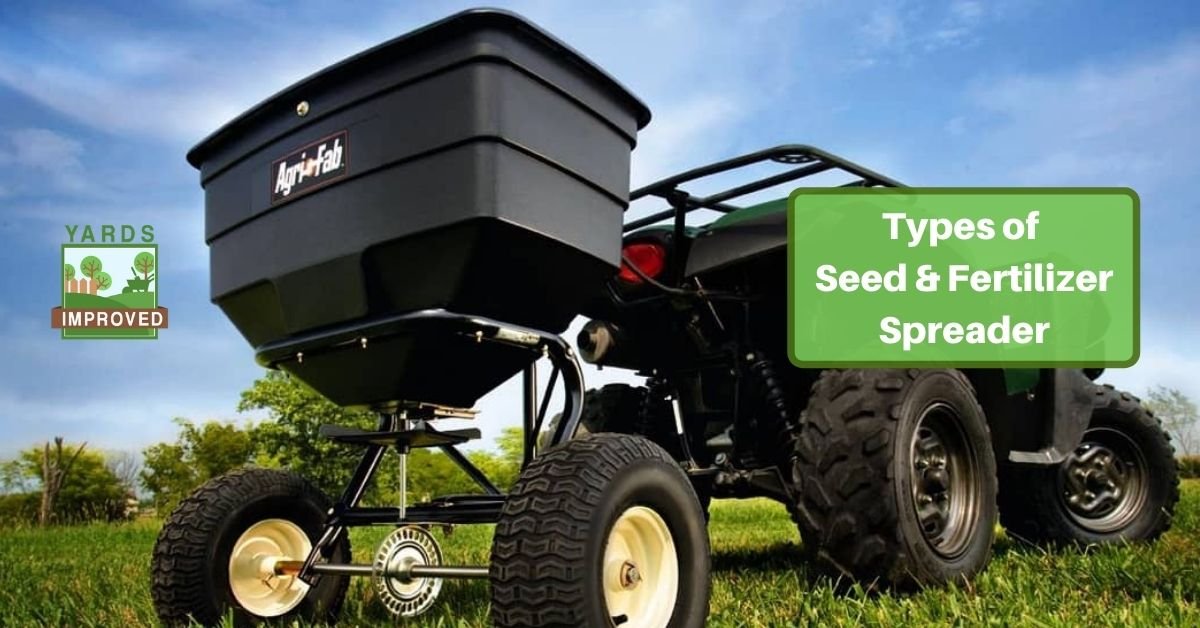Ever wonder why some parts of your lawn are incredibly lush, while others have sparse growth? All things being equal, maybe it’s just that more seed and fertilizer wind up in one area than another. A seed and fertilizer spreader can help solve that issue!
The same tool can serve for spreading both fertilizer and seed. There are handheld and wheeled versions. And they can make life easier for you while also leading to a better-looking lawn.
Why A Spreader Can Help Create A Better Lawn
Spreading seed or fertilizer by hand means that you’ll likely get an uneven presence and a lot of waste.
On the other hand, spreaders spread either material in a more even way. That means the whole lawn gets the same amount of seed. It gets fertilized evenly. And that means your grass will grow evenly all over.
Of course, there may still be spots that need special care. Other factors may cause patches with little grass, and you’ll have to tend them individually. But a spreader sets the groundwork for a yard that looks great all over.
How A Spreader Saves You Time
Tools are supposed to save time, and a spreader helps here, too.
Instead of grabbing a handful of seed and dropping or spreading it, the spreader throws or drops it. You can put more fertilizer or seed in a spreader than you could hold in your hand. That means fewer trips back to the bag!
You’ll probably have less spillage too, which means less time cleaning up. It’s always possible to spill with a spreader, too – and the spills could be severe. But in general, they are rare. But with your hands, there will always be a bit that gets away from you with each fistful.
If your lawn is in really bad shape, sodding might be a better choice. Read our article.
Types of Seed and Fertilizer Spreader
There are three general categories of spreaders. Let’s talk about the pros and cons of each.
Handheld Spreader
A handheld spreader is a small container that has a trigger to spray out your seed or fertilizer. The advantage of this is that you can carry more material than if you were only using your hands.
It works like a broadcast spreader, spraying the seed out in a wide arc.
There’s not a lot else to be said for this, though. It doesn’t distribute your fertilizer or grass seed well, since a lot depends on how well you aim it and how often you pull the trigger.
Broadcast Spreader
A broadcast spreader does what the name says: it casts, or throws, your seed or fertilizer in a broad fashion.
It consists of a wheeled bin. As you push it along, a gear-typed dispenser opens at the bottom. It expels your material all around your path.
This provides a lot of reach and a reasonably even distribution. However, you have to maintain a constant pace. If your speed varies, you’ll still end up with more product in some areas than others.
Drop Spreader
A drop spreader is similar to a broadcast spreader, but rather than tossing the fertilizer or seed out, a drop spreader drops it directly below where you pass.
The drop rate relies on the distance you move rather than your speed, so you get more consistency. However, it takes longer to finish the task than a broadcast spreader since it has a limited range.
You get the best results with a drop spreader. It offers the most even spread if your yard isn’t too large. But if you have a large lawn to cover, you might want to sacrifice some precision to gain speed with a broadcast spreader.
Tips For Using A Spreader
No matter the type of spreader, and whether you’re using it for seed or fertilizing, these tips will help:
- Always cut your grass first.
- Fill your spreader on the sidewalk or driveway. That way, if you do spill any, it’s easier to kill up. Also, if excess fertilizer were to fall on grass, it could burn it.
- If your lawn is a rectangle, start by spreading seed in two “end zones” at the far ends of the area. This will be where you turn around.
- If your lawn has an irregular shape, create a border around the edge.
- Work in the longest direction.
- Go slowly around trees and other obstacles.
- Move at a constant speed, especially when using a broadcast spreader.
- Close the spreader’s release area when making turns.
- Overlap the strips.
- With a broadcast spreader, allow a four-foot buffer around areas you don’t want to fertilize.
Conclusion
A seed and fertilizer spreader can help you have a lawn that’s consistently beautiful from end to end. It also makes the task of spreading these materials simpler. A drop spreader offers the best results, but it takes more time to do the job. If your lawn is large, you might want to consider a broadcast spreader instead. Either will offer an upgrade from trying to do the job by hand!









